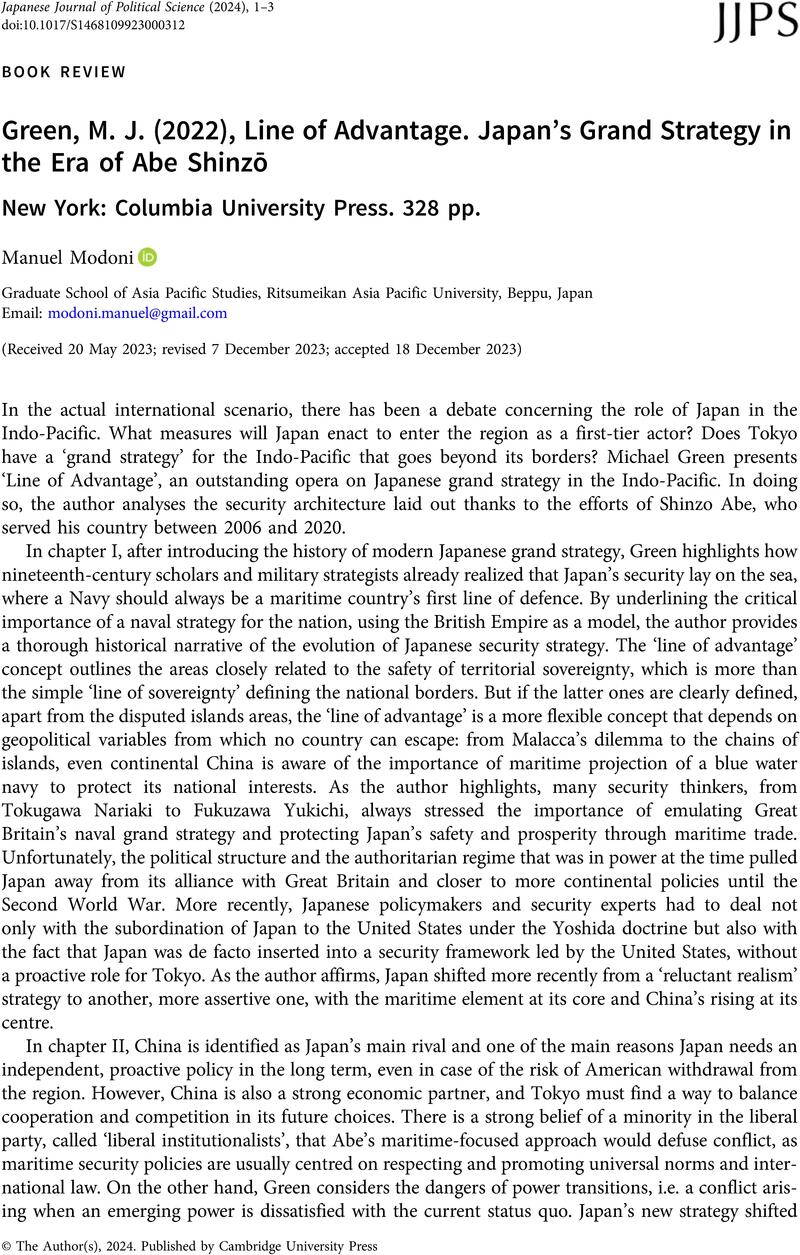No CrossRef data available.
Article contents
M. J. Green (2022), Line of Advantage. Japan's Grand Strategy in the Era of Abe Shinzō New York: Columbia University Press. 328 pp.
Review products
M. J. Green (2022), Line of Advantage. Japan's Grand Strategy in the Era of Abe Shinzō New York: Columbia University Press. 328 pp.
Published online by Cambridge University Press: 26 February 2024
Abstract
An abstract is not available for this content so a preview has been provided. Please use the Get access link above for information on how to access this content.

- Type
- Review
- Information
- Copyright
- Copyright © The Author(s), 2024. Published by Cambridge University Press


